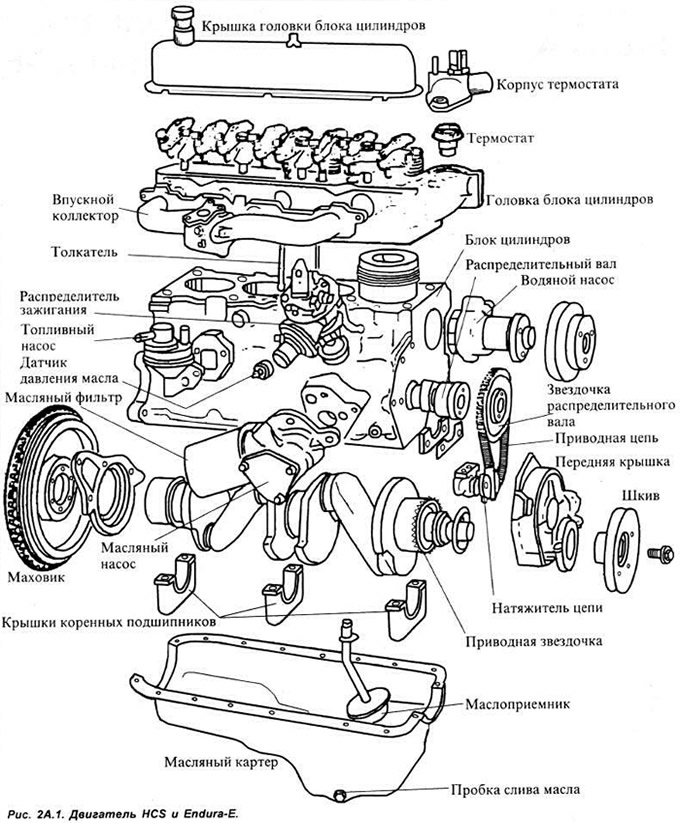Engine description
Overhead valve engine. water-cooled, with four cylinders arranged in a row. designated HCS or Endura-E. The Endura-E engine was introduced in 1996 and. except for the aluminum oil pan, modifications to the intake manifold and air supply system. virtually identical to the HCS engine. which replaces. The engine is mounted transversely on the front side of the car along with the gearbox
The crankshaft is supported by five main bearings. The lower head of the connecting rod is mounted on the connecting rod bearings, and the upper one is connected to the pistons by piston pins with a fixed fit. Each piston has two compression rings and one oil scraper ring.
The camshaft, mounted on bearings in the cylinder block, is driven by a chain from the crankshaft, and actuates the valves through tappets and rocker arms. The valves are closed by a single valve spring and operate in guides mounted in the cylinder head. The oil pump is mounted on the cylinder block and is driven by the camshaft. On engines with a carburetor, the fuel pump is also driven from the camshaft via an eccentric cam.

Repair without removing the engine
On the engine installed in the car, you can perform the following operations:
- Compression check.
- Removal and installation of a cover of a head of the block of cylinders.
- Valve clearance adjustment.
- Removal, inspection and installation of the valve rocker axis.
- Removal and installation of a head of the block of cylinders
- Cleaning the cylinder head and pistons.
- Removal and installation of the crankshaft pulley.
- Replacing crankshaft oil seals.
- Removal and installation of the chain, sprockets and tensioner.
- Oil filter replacement.
- Removal and installation of the oil pump.
- Removal and installation of the oil pan.
- Removal, inspection and installation of the flywheel.
- Inspection and replacement of engine/gearbox mounting mounts.
Visitor comments